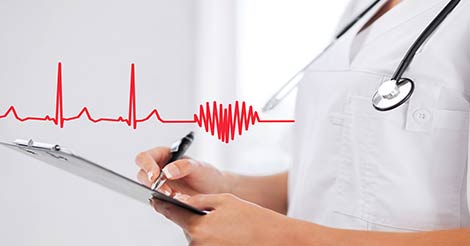Heart disease remains one of the leading causes of death worldwide, but advances in medical science have significantly improved how we diagnose and treat it. With modern tools, tests, and treatment methods, early detection and effective management of heart conditions have become more precise and accessible than ever before.
If you’re concerned about your heart health, the first step is often a consultation with a cardiologist—a doctor who specialises in diagnosing and treating disorders of the heart and blood vessels. Let’s explore the key ways heart disease is identified and the modern options available for managing it.
Understanding Heart Disease
Heart disease is a broad term that includes several conditions affecting the heart’s structure and function. The most common type is coronary artery disease (CAD), which occurs when the arteries supplying blood to the heart become narrowed or blocked.
Other types of heart disease include heart failure, arrhythmias (irregular heartbeats), valve problems, and congenital heart defects. Symptoms may include chest pain, shortness of breath, fatigue, and palpitations—but in some cases, heart disease may be silent until a serious event like a heart attack occurs.
That’s why timely diagnosis by a cardiologist is critical.
How Is Heart Disease Diagnosed?
Diagnosing heart disease involves a combination of reviewing medical history, physical exams, and a variety of tests. Your cardiologist will tailor the diagnostic approach based on your symptoms, risk factors, and overall health.
1. Physical Examination and Risk Assessment
The process often starts with a discussion about your symptoms, family history, lifestyle, and any risk factors such as smoking, high cholesterol, high blood pressure, diabetes, or obesity. Your cardiologist will then conduct a physical examination, including checking your blood pressure, heart rate, and listening for abnormal heart sounds.
2. Electrocardiogram (ECG or EKG)
An ECG is a non-invasive test that records the electrical activity of your heart. It can detect arrhythmias, past heart attacks, or signs of coronary artery disease. It’s often used as a first-line test in emergency settings or routine check-ups.
3. Echocardiogram
An echocardiogram uses ultrasound waves to create images of your heart’s structure and function. It helps your cardiologist assess how well your heart is pumping and can reveal valve problems, heart wall damage, and fluid around the heart.
4. Stress Testing
A stress test measures how your heart responds to exertion. You may be asked to walk or run on a treadmill while hooked up to monitoring equipment, or a medication may be used to stimulate your heart if you’re unable to exercise.
5. Blood Tests
Blood tests can measure cholesterol levels, inflammatory markers, and cardiac enzymes—substances that may indicate heart damage or elevated risk.
6. Coronary Angiography and CT Scans
In more advanced cases, your cardiologist may recommend a coronary angiogram. This test involves injecting dye into the coronary arteries and taking X-ray images to identify blockages. CT scans or cardiac MRI may also be used to get detailed images of the heart and vessels.
How Is Heart Disease Treated?
Once diagnosed, heart disease can be managed through a combination of lifestyle changes, medications, and, in some cases, surgical procedures. The treatment plan depends on the type and severity of the disease.
Lifestyle Changes
The foundation of heart disease treatment often begins with lifestyle adjustments. These changes may include:
- Eating a heart-healthy diet low in saturated fats, sodium, and added sugars
- Exercising regularly
- Quitting smoking
- Managing stress
- Maintaining a healthy weight
A cardiologist can provide specific recommendations based on your condition and overall health goals.
Medications
Many patients with heart disease benefit from medications that help control symptoms and prevent further damage. Common drugs prescribed by a cardiologist include:
- Blood pressure medications (e.g., ACE inhibitors, beta-blockers)
- Cholesterol-lowering drugs (e.g., statins)
- Antiplatelet agents (e.g., aspirin) to prevent clot formation
- Antiarrhythmic medications to regulate heartbeat
- Diuretics to reduce fluid buildup in heart failure
Your cardiologist will monitor your response and adjust medications as needed over time.
Medical Procedures and Surgery
For some individuals, lifestyle changes and medications may not be enough. In such cases, interventional procedures or surgery may be required.
- Angioplasty and Stenting: A catheter is used to open blocked arteries, often with a stent to keep the artery open.
- Bypass Surgery (CABG): In cases of severe blockages, surgeons may create new pathways around the blocked arteries using grafts.
- Pacemakers and Defibrillators: For patients with rhythm disorders, these devices help regulate the heartbeat.
- Valve Repair or Replacement: Damaged heart valves may be repaired or replaced with artificial or biological valves.
These procedures are typically recommended by a cardiologist based on test results and overall health status.
Follow-Up and Ongoing Care
Heart disease is often a chronic condition, meaning it requires ongoing management and follow-up. Regular visits to your cardiologist are essential for monitoring progress, adjusting medications, and addressing any new symptoms.
Cardiac rehabilitation programs—supervised by medical professionals—are also helpful in guiding recovery and lifestyle changes after a cardiac event or surgery.
Final Thoughts
Thanks to advances in diagnostics and treatment, heart disease is no longer the death sentence it once was. With early detection, expert care, and a proactive approach, many people with heart disease go on to lead long, fulfilling lives.
If you have concerns about your heart or risk factors, don’t wait. Speak with a cardiologist to understand your heart health and take control of your future.

















